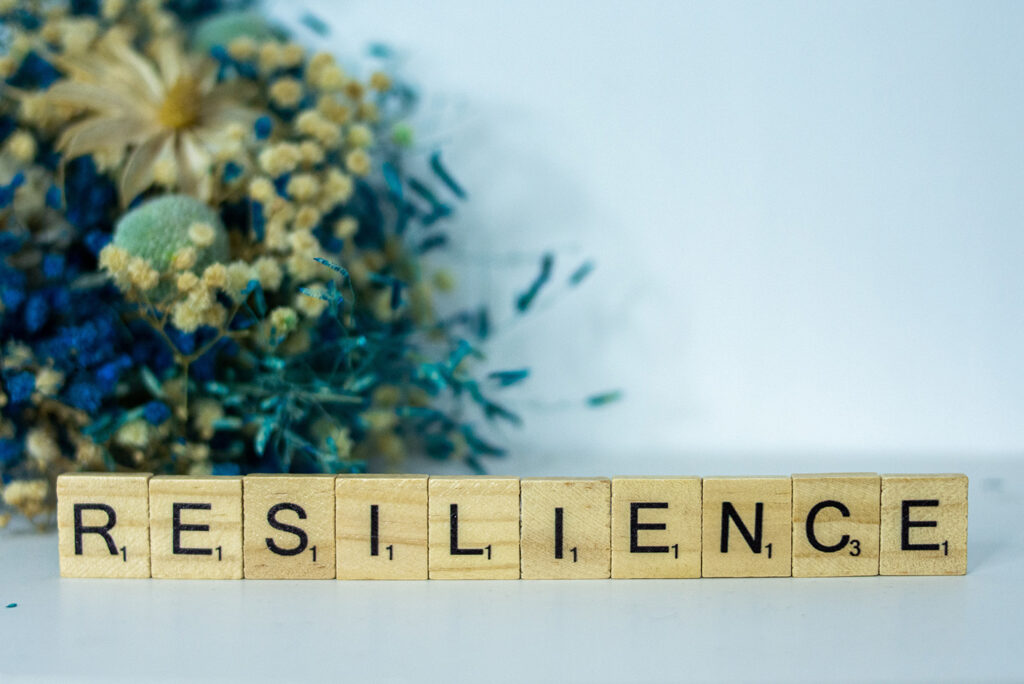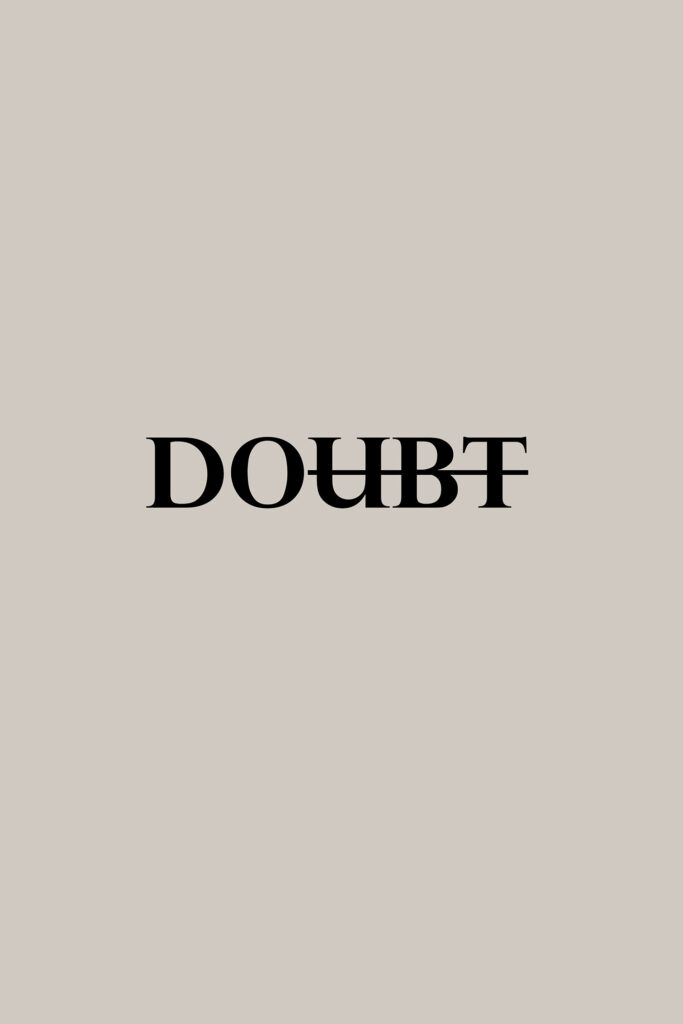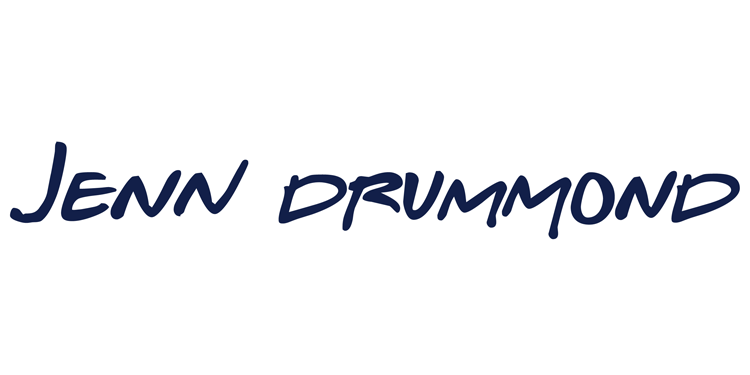You’ve been here plenty of times before. Something seems too overwhelming, a deadline feels impossible, or a relationship is broken beyond repair. You’re at the lowest low, facing the biggest challenge, or simply lacking the motivation you need to take on a day. We’ve all been there.
What makes the difference is the tools we have in place to keep going. To do it anyway. To persevere and thrive.
Among the full arsenal of emotional and psychological tools I’ve carefully and meticulously chosen to add to my belt along this journey called life, one of them I’m most proud of is resilience.
By definition, resilience is a game maker. It’s the ability to recover, to pivot, and to adjust quickly in the face of adversity. Because life’s hurdles will keep popping up, mostly unexpectedly. But you’ve gotten through every single hardest day you’ve had so far, and resilience is the Swiss army knife you needed.
I also recognize that the practice of resilience is just that: practice. It comes into play in both our personal and professional lives, and today, I want to focus on how to build resilience at work.
Developing resistance isn’t just a choice. It’s a strategic advantage, a way to navigate the challenges, setbacks, and the ever-evolving nature of your career. Beyond that, I don’t believe resilience is about just surviving, but rather about thriving in the face of adversity. It can be your secret weapon for success, especially in the professional arena.
 Understanding Workplace Resilience
Understanding Workplace Resilience
Understanding workplace resilience is about recognizing the essential qualities and strategies that enable us to thrive when giving up seems easier. Building resilience is also closely linked to fostering a positive work environment, where support systems and effective stress management play pivotal roles.
Ultimately, understanding workplace resilience means acknowledging that it is not just an individual trait but a collective strength that contributes to a healthier, more dynamic, and successful professional landscape.
Here are a few effective strategies to help foster positive workplace relationships, manage stress, and ultimately develop employee resilience:
Recognize the Role Self-Awareness Plays
Our journey to better workplace resilience starts within us. Self-awareness and emotional regulation are vital components of workplace resilience, as they provide the foundation for navigating the complexities of professional life.
Understanding your emotions and their impact on decision-making and interactions with colleagues is the first step toward building resilience. When you are self-aware, you can identify stressors, triggers, and patterns of emotional responses, allowing you to proactively address them.
That’s where emotional regulation joins the party. The ability to stay composed, remain focused, and make rational decisions under pressure is a hallmark of emotional regulation, aiding not only in personal well-being but also actively contributing to a positive work environment.
In the context of workplace resilience, self-awareness, and emotional regulation work together to foster an atmosphere of open communication and empathy. Colleagues who are attuned to their emotions and can regulate them are better equipped to support one another during times of stress.
This collective emotional intelligence contributes to a more resilient workforce, where individuals are not only capable of dealing with their challenges but also adept at providing emotional support to their peers. Ultimately, self-awareness and emotional regulation form a solid foundation upon which the entire edifice of psychological resilience training can be built.
 Practice Adaptability and Flexibility
Practice Adaptability and Flexibility
In today’s dynamic business world, change is the only constant. Technological advancements, market fluctuations, and evolving consumer demands mean that the workplace landscape is in a constant state of flux.
Those who resist change may find themselves left behind, while those who embrace it can turn these shifts into opportunities for growth. Embracing change doesn’t mean blindly accepting every shift but rather adopting a flexible mindset that allows you to assess, adapt, and seize the advantages hidden within these changes.
When you view change as an opportunity for growth, you not only weather the storm but also find ways to use it to your advantage. It’s akin to a tree bending in the wind rather than breaking; it’s about maintaining your core values and objectives while being open to new ways of achieving them. This adaptability not only enhances your personal resilience but also contributes to a more agile and innovative workplace.
Embracing change and uncertainty is, in essence, a shift in perspective. It’s recognizing that challenges and disruptions are not solely threats but also catalysts for progress. When you choose to see change as an avenue for learning, you develop a growth mindset that enables you to proactively seek opportunities within the uncertainty.
This change in perspective not only builds your own resilience but can also inspire your colleagues and team members to adopt a similar outlook, fostering a more resilient and forward-thinking work culture.
 Employ Effective Stress Management Techniques
Employ Effective Stress Management Techniques
Stress is an inevitable companion in the modern workplace and it can manifest in various forms – tight deadlines, high-pressure projects, or even workplace dynamics. In an era when self-care mental health are viewed as workplace priorities and an important part of overall employee performance, it’s imperative to include stress management in conversations about resilience at work.
It’s like charting a course through tumultuous seas; understanding the waves allows you to steer your ship more effectively. Stress management techniques become your tools and strategies to navigate these challenging waters with poise and determination.
One of the most powerful stress management techniques is mindfulness. By practicing mindfulness, you cultivate an awareness of the present moment, allowing you to disengage from the whirlwind of stressful thoughts.
It’s akin to dropping an anchor in the storm; mindfulness keeps you grounded and centered. This simple yet profound practice can significantly reduce stress levels, enhance mental clarity, and improve emotional resilience, all essential components of building resilience at work.
Just as physical exercise strengthens your body, incorporating exercise and effective time management into your routine can strengthen your stress-resilience muscles. Regular physical activity not only reduces the physical symptoms of stress but also boosts your mood and energy levels, enabling you to face workplace challenges with greater vitality.
Additionally, effective time management helps you prioritize tasks, reduce work-related pressures, and create a more balanced work-life equilibrium. Together, these techniques serve as your fitness regimen for both mind and body, equipping you to manage stress effectively and enhance your overall resilience.
 Build a Strong Support Network
Build a Strong Support Network
In the often challenging terrain of the workplace, having a support system is akin to having a lifeline. Cultivating positive relationships with colleagues, mentors, and friends in your professional sphere creates what can be termed as your “resilience network.”
These are the individuals who provide not only a listening ear but also a shoulder to lean on during tough times. When you’re facing adversity, whether it’s a demanding project or a personal setback, these connections can offer valuable emotional support, helping you navigate the storm.
Building positive relationships at work isn’t a one-way street; it’s a mutual exchange of support and learning. Just as your colleagues and mentors can provide emotional support, you can reciprocate by offering your own insights and assistance when needed.
This exchange not only strengthens your bonds but also fosters an environment of collaboration and camaraderie, which are essential elements of a resilient workplace culture. In this interconnected web of support, everyone benefits, collectively enhancing resilience.
Positive relationships in the workplace don’t just benefit individuals; they contribute to the creation of a resilient community within your organization. When teams share a strong sense of camaraderie and support, they are better equipped to face challenges together.
This collective team resilience can lead to more innovative problem-solving, higher morale, and increased productivity. It’s like a well-knit safety net that catches you when you stumble, ensuring that setbacks are only temporary and that the journey towards success is shared.
 Set Realistic Goals
Set Realistic Goals
Setting clear, achievable goals is like putting a destination on your professional map. It provides you with a sense of direction and purpose, which in turn fuels your motivation. When you have a well-defined objective in sight, it becomes easier to stay focused and persevere, even in the face of adversity. This clarity of purpose is a cornerstone of resilience, as it reminds you of the bigger picture and the rewards that await once you reach your goal.
The concept of breaking down long-term goals into smaller, manageable steps is akin to dividing a mountain into manageable foothills. It makes the seemingly insurmountable more approachable. These smaller milestones serve as checkpoints on your journey, allowing you to track your progress and celebrate your achievements along the way.
Moreover, this approach enhances your productivity, as it enables you to focus on specific tasks without feeling overwhelmed. When challenges arise, you can pivot and adapt more readily because you’re dealing with smaller, more manageable pieces of the puzzle.
Resilience is not just about bouncing back from setbacks; it’s about the tenacity to keep moving forward despite obstacles. Setting achievable goals and breaking them down into smaller steps hones your ability to persevere.
Each completed step becomes a testament to your determination and resilience, reinforcing your belief in your capacity to overcome challenges. This incremental progress creates a sense of accomplishment, which can be a powerful motivator to continue pushing forward, no matter how daunting the road ahead may seem.
 Maintain Healthy Work-Life Balance
Maintain Healthy Work-Life Balance
I feel like it goes without saying that all of this is for naught if it’s not handled with a healthy dose of work-life balance. To me, striking a balance between work and personal life is no longer a luxury but a necessity.
Achieving a healthy work-life balance isn’t about dividing your time equally between the two realms; it’s about recognizing that each facet of your life is interconnected and requires attention and nurturing.
Maintaining a healthy work-life balance has far-reaching benefits both for individuals and organizations. On a personal level, it enhances overall well-being, reduces stress, and fosters physical and mental health. It allows individuals to recharge and cultivate interests outside of work, leading to greater personal fulfillment.
On the professional front, a balanced lifestyle can boost productivity and job satisfaction, as employees bring a sense of freshness and enthusiasm to their tasks. Companies that prioritize work-life balance also tend to have higher employee retention rates, as well as improved morale and creativity among their workforce.
Achieving a healthy work-life balance in 2024 involves reevaluating and redefining the boundaries between work and personal life. It’s about embracing flexibility, whether through remote work options, flexible schedules, or shared responsibilities.
Effective time management and setting realistic expectations are also crucial in this pursuit. Moreover, recognizing the importance of self-care and making it a non-negotiable part of your routine can help you achieve equilibrium. Ultimately, a healthy work-life balance is a dynamic journey, and in 2024, it’s more achievable than ever with the right strategies and a commitment to your well-being.
Learn from Failure
This just in: failure happens and life goes on. Your perspective when it does is what matters. To me, failure is not a detour on the road to success; it’s an integral part of the journey itself. In any career, setbacks are inevitable, but it’s how we respond to them that defines our resilience.
Instead of dwelling on failure as a source of disappointment, see it as a gateway to growth.
Each setback is an opportunity to learn, adapt, and ultimately become more resilient. By shifting your perspective, you transform failure from a stumbling block into a stepping stone towards greater success.
When faced with failure, resilience emerges from the ashes of disappointment through a process of analysis and adjustment. After encountering a setback, take a step back and analyze what went wrong. Was it a strategy that didn’t work, a misjudgment, or external factors beyond your control?
This critical self-assessment allows you to pinpoint areas for improvement and identify valuable lessons. It’s a bit like a pilot reviewing a flight’s black box to understand what caused a crash, enabling safer journeys in the future.
That’s the end in mind, right? That’s what gives us hope when a project seems overwhelming, or a deadline feels impossible. When you’re thinking intentionally about how to build resilience skills at work, you’re creating a safer, happier, healthier, more fulfilling journey for everyone involved.
I know this firsthand as I too have had my fair share of setbacks, career challenges, and moments when giving up seemed like the easiest option. We’ve all been there. But resilience isn’t just about bouncing back; it’s about intentionally moving forward with newfound knowledge.
The ability to adjust and refine your strategies in response to challenges is a hallmark of resilience. Armed with the wisdom gained from past failures, you can confidently move forward, better equipped to navigate future hurdles and, ultimately, achieve even greater success.





Related Posts
7 Reasons Why Professional Development Is Important
How to Create The Ultimate Self-Care Plan
7 Secrets to Becoming a Better Employee